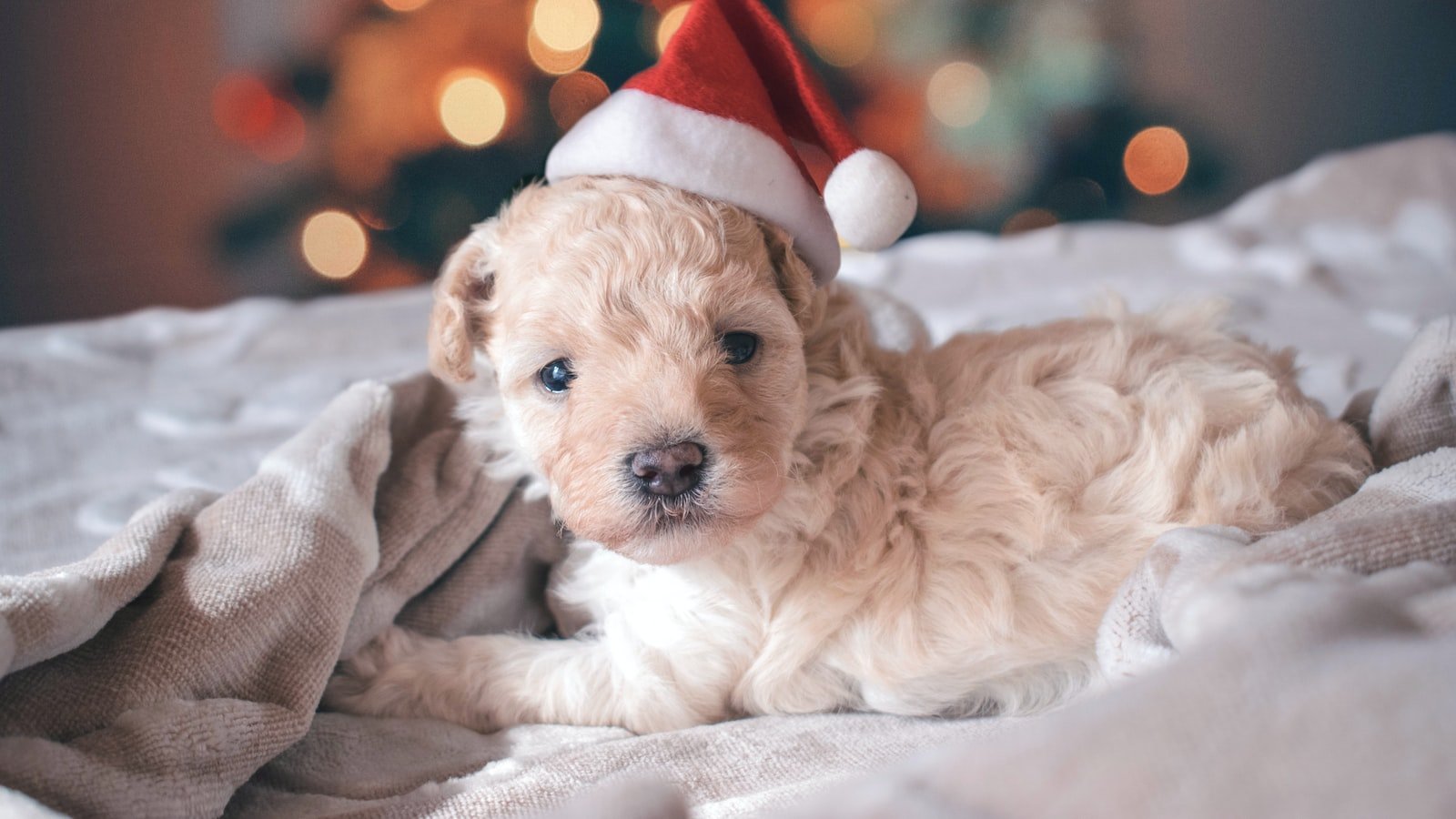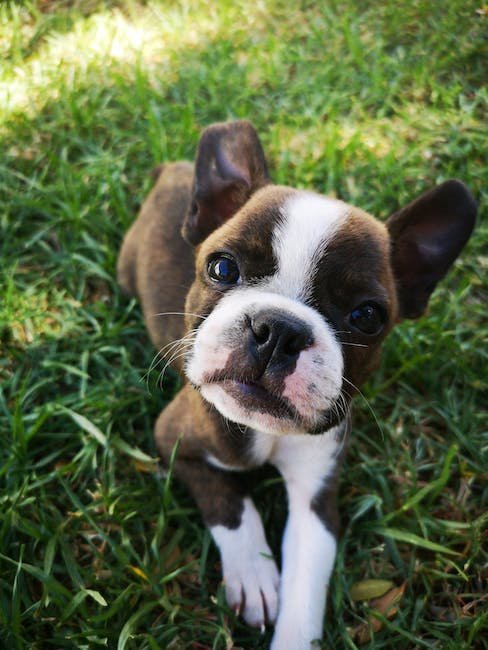Training a puppy can be an overwhelming task, akin to a whirlwind of chewed shoes, accidental messes, and endless barking sessions. But what if I told you that there is a secret weapon that can transform this tumultuous journey into a delightful adventure? Enter the world of positive reinforcement, a powerful training technique that taps into your puppy’s natural instincts and rewards desired behaviors. From learning basic commands to nurturing good behavior, positive reinforcement holds the key to unlocking your furry friend’s potential and building a strong, lifelong bond. Get ready to discover the incredible power of positive reinforcement in puppy training and unlock a world of wonders with your four-legged companion.
Table of Contents
- The Art of Positive Reinforcement in Puppy Training
- Building Strong Bonds through Positive Reinforcement
- Unlocking the Full Potential of Your Puppy with Positive Reinforcement
- Tips and Tricks: Implementing Positive Reinforcement in Puppy Training
- The Ultimate Guide to Positive Reinforcement Techniques for Effective Puppy Training
- Q&A
- Insights and Conclusions

The Art of Positive Reinforcement in Puppy Training
When it comes to training a new puppy, positive reinforcement is a powerful tool that can lead to remarkable results. By focusing on rewarding desired behaviors rather than punishing unwanted ones, you can establish a strong bond of trust and respect with your furry friend.
In the art of positive reinforcement, consistency is key. Make sure to consistently reward your puppy for displaying the behaviors you want to encourage. This could be a simple pat on the head, a treat, or even verbal praise. By doing so, you are reinforcing the idea that good behavior leads to positive outcomes, making your puppy more eager to behave in the desired manner.
- Use treats strategically: Treats are a powerful motivator in puppy training. Keep a stash of small, delicious treats handy to reward your puppy immediately when they perform a desired action.
- Be patient and persistent: Rome wasn’t built in a day, and neither is a well-trained puppy. Remember to be patient with your furry companion, as learning takes time. Stay consistent with your positive reinforcement techniques and they will eventually pay off.
- Practice, practice, practice: Repetition is key in puppy training. Create regular training sessions to reinforce desired behaviors and teach new commands. By practicing regularly, you are helping your puppy build confidence and master the skills you are teaching them.
Positive reinforcement not only helps in teaching your puppy basic obedience commands but can also be a powerful tool to correct unwanted behaviors. By redirecting your pup’s attention to a desired action and rewarding them for it, you can effectively deter them from engaging in undesirable behaviors.
In conclusion, is all about creating a cheerful and rewarding environment for your furry companion. By using strategic rewards, staying patient and persistent, and practicing regularly, you can shape your puppy into a well-behaved and confident canine companion.

Building Strong Bonds through Positive Reinforcement
In any relationship, whether it be with a friend, family member, or pet, building strong bonds is crucial for long-lasting connections. One of the most effective ways to achieve this is through the power of positive reinforcement. By focusing on the positive aspects of the relationship and rewarding desirable behavior, we can create a sturdy foundation built on trust, respect, and love.
Positive reinforcement involves acknowledging and rewarding the behaviors we want to encourage. This can be as simple as a kind word or a pat on the back, or as significant as a special treat or a day out doing something enjoyable together. By consistently reinforcing positive actions, we let the other person or animal know that their efforts are recognized and appreciated. This fosters a sense of accomplishment and encourages both parties to continue engaging in behaviors that strengthen the bond.
- Express gratitude and appreciation regularly
- Compliment and acknowledge efforts
- Use praise and rewards to reinforce positive behavior
- Engage in activities that promote shared experiences
- Communicate openly and honestly
By utilizing positive reinforcement techniques, we can build resilient connections that endure through the inevitable challenges that life throws our way. Remember, true bonds are formed and maintained by nurturing positivity, fostering growth, and celebrating the wonderful attributes that make each relationship unique.

Unlocking the Full Potential of Your Puppy with Positive Reinforcement
Your puppy is a blank canvas waiting to be filled with the colors of learning and growth. Positive reinforcement is the key that unlocks their full potential, shaping them into a confident, well-behaved, and happy companion. By focusing on rewards rather than punishments, you can create a harmonious bond with your furry friend that will last a lifetime.
Here are some powerful ways you can utilize positive reinforcement to bring out the best in your puppy:
- Reward-based Training: Encourage your puppy by offering treats, praise, and affection when they perform desired behaviors. This not only motivates them to repeat those actions but also builds trust and strengthens your bond.
- Clicker Training: Utilize a clicker to associate the sound with rewards. This sharp, distinctive sound marks the exact moment your puppy demonstrates a desired behavior, making it easier for them to understand what you are rewarding them for.
- Consistency: Stay consistent with your training methods, cues, and rewards. This helps your puppy understand what is expected of them and makes the learning process more efficient. Consistency is the key to forming long-lasting habits.
Remember, your puppy is like a sponge ready to soak up knowledge and experiences. With positive reinforcement, you hold the key to unlocking their true potential. Embrace the journey and watch as your little pup blossoms into a well-rounded and delightful companion.
Tips and Tricks: Implementing Positive Reinforcement in Puppy Training
Welcome to the world of puppy training! As a new puppy parent, you’ll find that implementing positive reinforcement is not only effective but also a heartwarming approach to shaping your furry friend’s behavior. Here are some handy tips and tricks to aid you on your training journey:
- Consistency is key: Dogs thrive on routine and repetition. Establish clear and consistent cues and rewards to help reinforce good behavior. Stick to a regular training schedule to ensure your puppy understands what’s expected of them.
- Use rewards wisely: Positive reinforcement relies on motivators like treats, praise, and playtime. Be sure to tailor your rewards to suit your puppy’s preferences. Some pups are food-motivated, while others are more driven by toys or verbal praise. Experiment to find what incentivizes your furry companion the most!
- Keep sessions short and fun: Puppies have short attention spans, so keeping training sessions brief (around 5-10 minutes) will help them stay engaged. Make sure to end each session on a positive note, even if progress is slow. Remember, patience is key!
- Redirect and reinforce: Instead of scolding your puppy for unwanted behavior, redirect their attention to a more suitable activity. For example, if they’re chewing on furniture, offer a chew toy as an alternative. When your pup makes the right choice, instantly reward and praise them to strengthen the desired behavior.
- Seek professional guidance: If you’re facing difficulties or need more specialized training advice, don’t hesitate to consult a professional dog trainer. They can provide personalized strategies to address specific challenges, ensuring your pup gets the guidance they need.
Remember, puppies are like sponges, eagerly soaking up knowledge and experiences. By implementing positive reinforcement techniques and utilizing these tips and tricks, you’ll build a strong foundation of trust, communication, and mutual understanding with your furry companion. Enjoy the rewarding journey of puppy training!
The Ultimate Guide to Positive Reinforcement Techniques for Effective Puppy Training
Training a new puppy can be an exciting yet challenging endeavor. Setting a solid foundation using positive reinforcement techniques is essential for successful and effective puppy training. By understanding the power of positive reinforcement and applying it consistently, you can create a rewarding and enjoyable learning experience for both you and your furry friend.
Incorporating positive reinforcement techniques in your puppy’s training ensures that you focus on encouraging desired behaviors rather than punishing unwanted ones. Here are some effective techniques to help you along the way:
- Clicker training: Use a clicker to mark desired behaviors and follow it up with a reward. This helps your puppy associate the sound of the click with positive reinforcement and quickly learn what behavior is being rewarded.
- Treat rewards: Utilize small, delicious treats as rewards for correct responses or desired behaviors. This positive association with rewards is a great motivator for your puppy to repeat those actions.
- Verbal praise and affection: Puppies thrive on attention and love, so don’t underestimate the power of your words and affectionate gestures. Shower them with verbal praise, cuddles, and gentle pats to reinforce their good behavior.
- Consistency: Maintain a consistent approach to reinforce the desired behavior and avoid confusing your puppy. Ensure that everyone involved in the training process uses the same commands and rewards, creating a clear communication system.
- Patience and perseverance: Puppy training requires time and patience. Understand that your puppy is still learning and may make mistakes along the way. Show understanding, be patient, and persevere in providing positive reinforcement consistently.
Remember, positive reinforcement techniques are not only effective but also promote a strong bond between you and your pup. Be consistent, creative, and make training sessions fun-filled, providing your furry companion with the best foundation for a lifetime of good behavior.
Q&A
How does positive reinforcement work in puppy training?
Using positive reinforcement involves rewarding the puppy for good behavior, such as with treats, praise, or playtime, to encourage them to repeat it. This method focuses on teaching puppies to make positive associations with desired behaviors, leading to quicker and more effective training results.
Why is positive reinforcement important in puppy training?
Positive reinforcement helps develop a strong bond between the puppy and the trainer, creating a positive learning environment. By emphasizing rewards rather than punishment, puppies become motivated to learn and are more likely to retain the lessons learned during training sessions.
What are the benefits of using positive reinforcement?
Positive reinforcement builds self-confidence in puppies, as it allows them to experience success and earn rewards. It also promotes a healthy and happy puppy, reinforcing desired behaviors and reducing the likelihood of fear or anxiety-based issues that may arise from punitive training methods.
How can positive reinforcement be integrated into puppy training?
Positive reinforcement can be incorporated through clicker training, where a click signifies that the desired behavior has been performed, followed by a reward. Verbal praise, treats, and playtime can also be used to reinforce desired behavior, ensuring puppies associate it with positive outcomes.
Are there any potential challenges with using positive reinforcement in puppy training?
One potential challenge is being consistent in rewarding and reinforcing behaviors. It requires patience and dedication to continually reward the puppy for desired behaviors, while ignoring or redirecting unwanted behaviors. It may take time for puppies to fully grasp what is expected, so consistency is crucial.
Can positive reinforcement be used for correcting unwanted behaviors?
Yes, positive reinforcement can also be used to redirect and correct unwanted behaviors in puppies. By rewarding and reinforcing alternative, desirable behaviors while ignoring or redirecting the unwanted behavior, puppies learn that certain actions lead to positive outcomes, decreasing the occurrence of the unwanted behavior over time.
Are there any situations where positive reinforcement may not be effective?
In some cases, puppies with severe behavioral issues or learning difficulties may require additional training methods alongside positive reinforcement. It is important to evaluate the individual puppy’s needs and seek professional guidance if positive reinforcement alone does not yield desired results.
Insights and Conclusions
As we draw the curtain on this exploration into the realm of puppy training, we are reminded of the astonishing power that positive reinforcement holds. Through this journey, we have witnessed the magnificent transformation of mischievous little balls of fur into well-mannered and confident companions. The magic lies not in wielding a stern hand, but rather in embracing the enchantment of encouragement and rewards.
Like pixie dust sprinkled upon the everyday moments, positive reinforcement breathes life into the training process. It is a symphony of encouragement, a gentle nudge that guides our furry friends towards their best selves. It is the language of love and understanding that transcends spoken words, forging an unbreakable bond between pup and human.
As we navigate the labyrinth of puppy training, it becomes abundantly clear that positivity is the guiding star in this magical journey. It dances on the tip of our tongues, as we shower our pups with praise and shower them with treats. It twirls in the air, as we celebrate their smallest victories and triumphs. It illuminates the path ahead, allowing them to blossom before our very eyes.
The power of positive reinforcement speaks volumes about the incredible potential that lies within each puppy. As we harness this force, we become envoys of compassion, showing them the way to become their best selves. Patience becomes our ally, as we witness their growth unfold, petal by petal, day by day.
Dear readers, as you embark upon your own adventure of puppy training, remember the transformative power that lies within positivity. For every action, there is a reaction, and for every moment of encouragement, a lifetime of loyalty and devotion is forged. May you embrace this enchanting secret and discover the immense joy that comes from building a bond with your playful companion.
As an affiliate, my content may feature links to products I personally use and recommend. By taking action, like subscribing or making a purchase, you’ll be supporting my work and fueling my taco cravings at the same time. Win-win, right?
Want to read more? Check out our Affiliate Disclosure page.
